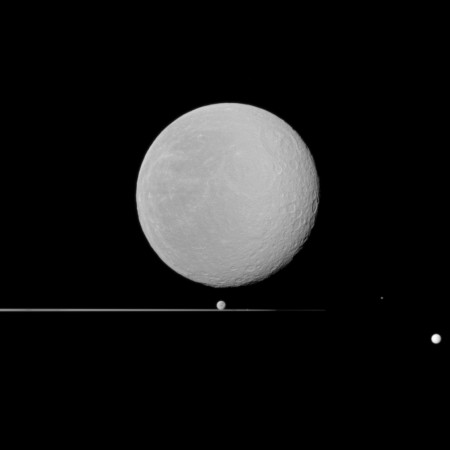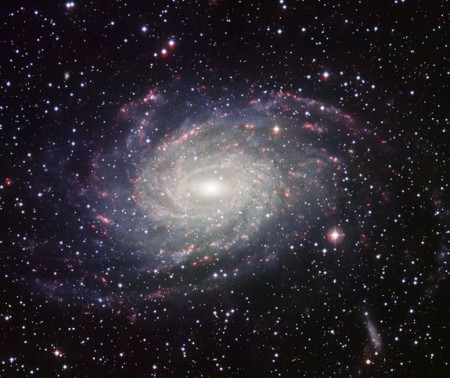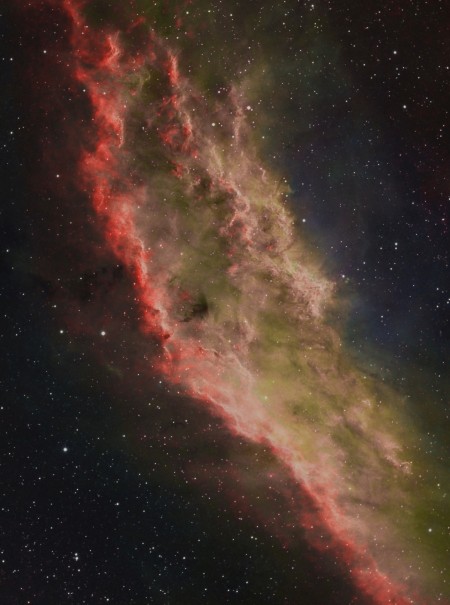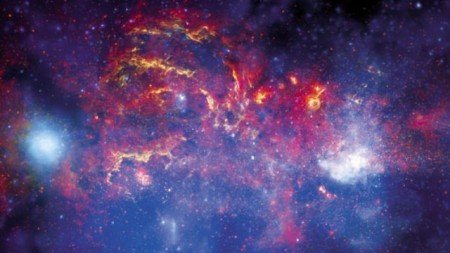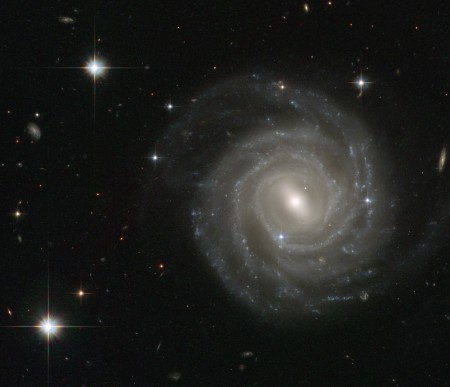#June2011
Check Out The Suicide Plunge Of A Comet Into The Sun. Cowards Way!
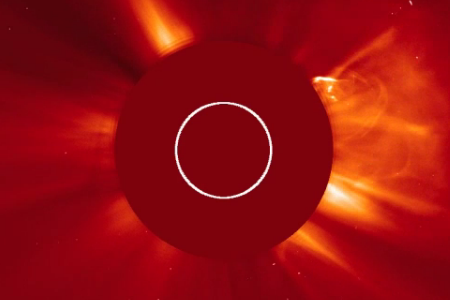
NASA’s SOHO satellite caught a gorgeous video of a comet’s suicide plunge into the Sun. No comet, no! There’s beauties worth living for in this universe. Especially for a lucky little thing like you, non-sentient but blessed with being able to zip around space.
Hit the jump for the video.
Saturn’s Moon Rhea Is A Camera Hog, But She’s Pretty So It Works.
NGC 6744 Is Milky Way Galaxy’s Twin, Supersized.
Astronomer Discovers Planets That Don’t Have Orbits. Que?!
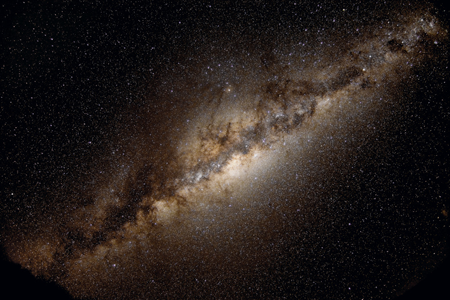
There’s a lot of complicated shit in a recent astronomy article that my limited attention span can’t keep track of. What I can tell you after skimming it is this, apparently some fucking planets don’t have orbits. Outstanding.
Milky Way Galaxy Is Warped, Has A New Arm!
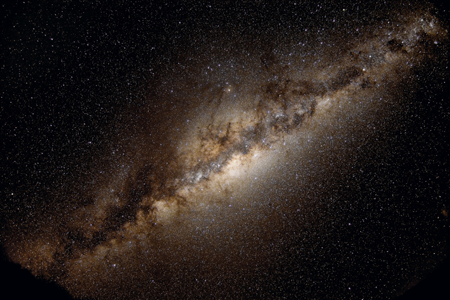
Milky Way Galaxy, home of us all, is apparently warped like a motherfucker. The discovery of a new arm of the galaxy has led to wonderful science speak describing why our galaxy looks like a fucking bottle cap.
California Gets Its Own Nebula; Swank and Cosmic.
Enlarge. | Via.
Oh shit! Just when you thought that California couldn’t be any more out of touch with reality, the son of a bitch has taken to the cosmos. The California Nebula, or if you want to call it by its slave name, NGC 1499, is straight-up chilling out in Orion’s Arm, in our own goddamn galaxy. We’re famous!
Behold The Center of the Milky Way Across The Entire Spectrum!
Enlarge. | Via.
See that shit? It’s the center of the galaxy you’re currently living in. Alasdair Wilkins explains how this pig was made:
This amazing image of the center of our galaxy is the work of three different space telescopes – Hubble, which photographs objects in the visual wavelengths, Chandra, which looks at X-rays, and Spitzer, which investigates the infrared.
Gorgeous. Astrophysicist Giovanni Fazio explains in Wilkin’s article that when ” you look at the universe in different wavelengths, you get a completely different picture. They are all pieces of a puzzle.” True dat.
Milky Way Galaxy May Be Surrounded By Dark Matter Galaxies. Wut?
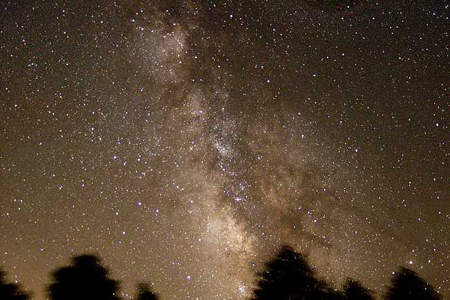
Speculative science is awesome. Especially if you’re into theorizing and not, you know, hardcore facts. This seems to always be the case when talking about sweet-ass outer-space things. You know. Black holes, dark matters. That sort of swag. Well today, we have this wonderful little teaser: is the Milky Way Galaxy surrounded by invisible dark matter galaxies? Dun, dun, dun!
Alasdair Wilkins over at io9 brings the interesting article to the forefront, and this is the dealio. Based on how gravity affects gases at the edge of the Milky Way, we should have a satellite galaxy located 26,000 light-years away. The problem? We ain’t never seen that thang. Wilkins elaborates:
Astronomer Sukanya Chakrabarti looked for gravitational effects created by potential satellite galaxies of our home, the Milky Way. Not unlike the gas giants such as Jupiter of Saturn, the Milky Way has a bunch of relatively tiny “moon” galaxies. The most famous of these, the Magellanic Clouds, are about 10 percent the size of our galaxy, but most of these satellite galaxies are less than a hundredth the size of the Milky Way.
Back in the 19th century, astronomers detected the planet Neptune by observing the slight gravitational wobble of Uranus, which could only be caused by an undetected planet further out. The same basic principle is at work here, as this mysterious Galaxy X is creating movement in the gas at the edge of our galaxy. Chakrabarti suspects the galaxy is composed mostly of dark matter, which is part of the reason why we hadn’t found it up to this point.
If it exists, Galaxy X would be about 1% the size of the Milky Way, making it the third largest satellite after the Magellanic galaxies. While dark matter would make up most of its mass, there would likely still be some dim stars of regular matter in there as well. The galaxy lies on the same plane as our galactic disc, meaning astronomers need to look through all the bright lights of the Milky Way just to see Galaxy X. Still, now that we know where to look, Chakrabarti says, we should be able to find it.
A dark matter galaxy! Interesting shit. I wonder what our dark matter companions are up to? Are they fans of sports? What sort of thing turns them on? Read more.
This Is The Milky Way Galaxy’s Big Brother
[Enlarge.]
Meet UGC 12158. Or as he calls himself in bars to pick up chicks, Biggie Spiral. You’ll notice a resemblance between Biggie and our favorite galaxy: Sir Milky Way. Namely, that they’re both gorgeous spiral galaxies. Phil Plait, who has worked with Hubble images for years, decided to crunch the numbers on this gorgeous galaxy:
So I went to the release page for it, and when I saw the distance, I was shocked: that galaxy’s not big, it’s freaking huge. I figured it was part of the Virgo cluster, maybe, 60 million light years away or so. Nope: it’s a whopping 400 million light years distant, which is a long, long haul. That was stunning to me; if it’s that far away the galaxy really has to be a bruiser. So I grabbed a raw image from the Hubble archive and measured its size in pixels, which I could then convert to a spatial size given its distance.
And I can still hardly accept this, but UGC 12158 is 140,000 light years across. I measured it twice, two different ways, to be sure. That’s the biggest spiral I’ve ever heard of! Mind you, the Milky Way is in the top tier of galaxies in the entire Universe when it comes to size, but UGC 12158 whips us by a clean 40%!.
Good lord. I had no idea that the Milky Way Galaxy was an impressively sized galaxy until Phil Plait dropped that knowledge bomb on me. But still!, this galaxy is 40% bigger? Brain. Doesn’t compute. Wants to, but cannot.
Via.
Milky Way Moves Through The Night Sky In Time Lapse. [Video.]
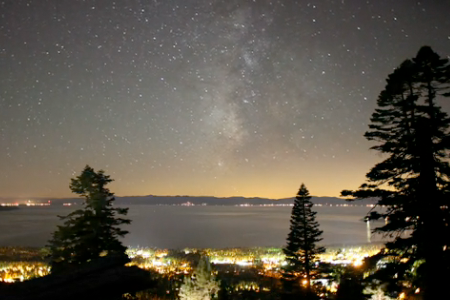
In September, Justin Majeczsky caught the Milky Way moving through the night sky. What a gorgeous time lapse video. A sexy reminder that we are currently nestled within a galaxy floating through space. The universe churns around us. Through us. Phil Plait at Bad Astronomy (a blog of incalculable awesomeness), puts it in crazier perspective:
From our vantage point 25,000 light years or so out, you can see the central bulge of the galaxy moving across the sky. That’s the combined might of billions of stars and octillions of tons of gas and dust!
It’s absolutely fucking mind blowing. My fat simian mind attempting to comprehend it, fails. Fails hard. Imagine if there’s life on other planets, can you imagine how fucking tired Santa Claus must be? Hit the jump for the video.




